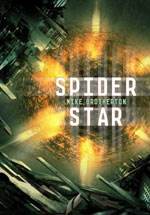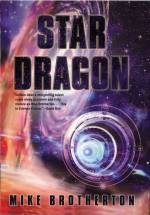Search
How to Put Some Science in Your Science Fiction
October 12th, 2008
James Harris calls for more real science in science fiction, and discusses how there’s science as fantastic as science fiction already out there to inspire and to steal from. Steal is my word, not his, but it’s a time-honored tradition in the fiction business and the sincerest form of flattery.
I remember reading about how Isaac Asimov wrote a non-fiction article about neutron stars way back when, then Larry Niven wrote “Neutron Star” fictionalizing all the cool science Asimov had written about, and went on to win a Hugo award.
You can write a story about almost anything if you take your time, find the right angle, the right character, the right problem. An easy way to get science into a story is to start with the science.
When I went to Clarion West back in 1994, one of my outstanding teachers was Michael Swanwick during week 4. He’d read our stories at the workshop so far, and noticed the same thing that James Harris writes about and many editors complain about: precious little science in our science fiction. He brought in a pile of back issues of Science News, a weekly magazine covering all fields of science. He asked us to pick three articles and pitch story ideas based on them. I didn’t agree with all his assessments of the story potential in each, but I did agree with the value of the experiment.
Today, it’s easy enough to scan the science news online and find featured article with more detail at places like Scientific American and Discover.
The easy thing to do to develop a story is to take a classic formula. With new technology, who gets hurt or marginalized? What are the unintended consequences of the new discovery? Can you make the new findings part of the story setting and make the plot depend on understanding their significance? Usually the easy path produces a competent story, but more interesting work relies on inverting expectations, so look to see if you can find the silver lining in the unintended consequences.
And here’s a trick to remember. SCIENCE IS FREAKING AWESOME! We figure out the coolest shit with science. If you’ve picked an article or topic that fascinates you, get that fascination into your story! If it’s about the methodology, focus there. Or the technology, or the potential, or the insight, or the dedication. Whatever you think is the coolest thing, that should be your focus.
For myself, I’ve always loved astronomy. Basic physics, much less, but their application in space brings up the coolness factor by a million. My first novel Star Dragon involves an interstellar trip to a particular type of binary star called a cataclysmic variable that explodes in “dwarf novas” — way cool! I wanted to write about what it would be like to go to such a place. My second novel Spider Star was sparked about the idea of what a dark matter planet might be like and why it might be of interest. Different kind of places and physics than I’d seen in any science fiction I’d read before. That was what I thought would be cool to write about.
Anyone can do it. Read with your eyes open for things that seem cool. Figure out the essence of that coolness. Develop a story around it. Maybe it fits in with a character or plot that’s been floating in your imagination waiting for a setting or a plot device.
You can follow any responses to this entry through the RSS 2.0 feed. You can leave a response, or trackback from your own site.


I have to agree with you there. There’s any number of cool story ideas out there in magazines like Scientific American. That said, I don’t think that we should forget that there’s a lot of things that came out of the minds of science fiction writers imaginations (Asimov springs to mind) that has helped inspire scientific research.
Besides wanting to promote science, we have another thing in common, we’re both alumni of the Clarion West Writer’s Workshops. I’m from the class of 2002. You have a lot of good science links on your site, so I’ll be poking around here for awhile. I need to add more to my site.
[…] SF writer Mike Brotherton talks about how truth is stranger than fiction, and including real science in Science Fiction might be easier than it first appears: And here’s a […]